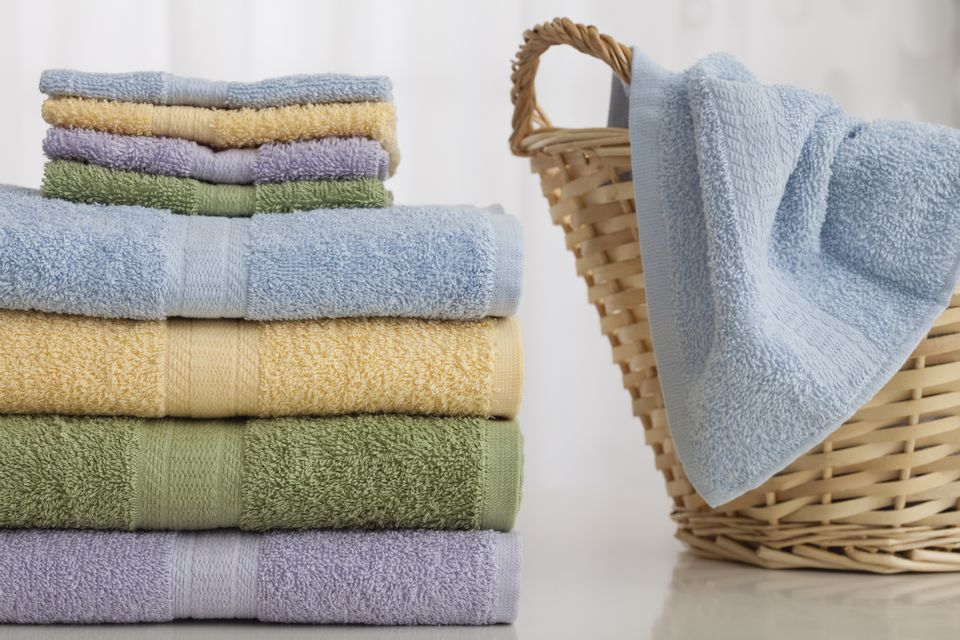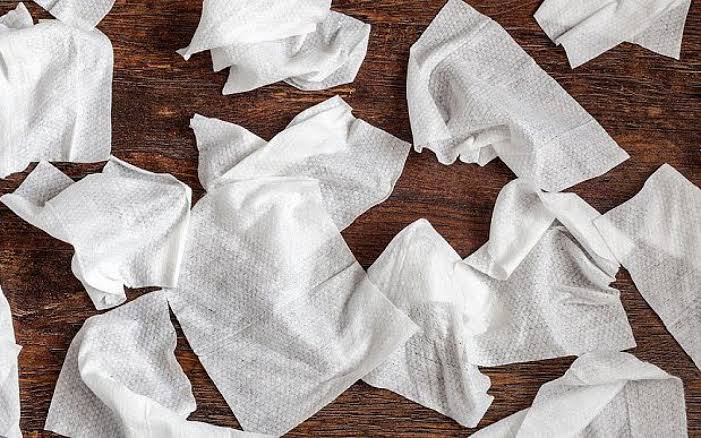(Photo: Alamy)
If you’ve never thought of the massively negative impacts of consumerism on widely varied items and products to our society and especially the planet, now is the time. Better late than never.
There are many global scale facts and figures already available on the internet, collected and researched by governments, academia, companies, NGOs, organizations, and many more for you to be able to see the bigger pictures.
Noted that limiting, stopping, reducing, or recycling the use of already owned things is more advised than buying new things. But there are exceptions when taking the long term costs and benefits of things into account. Also, there is no such thing as the perfectly combined of sustainably produced, environmentally friendly, carbon zero, and cruelty-free items or products. We just couldn’t achieved it altogether and at the same time.
Some may have multiple benefits but still, logically and theoretically, we can’t create things from nothing. It will always use the already available energy and resources. So think of what cause you wanted more to support and what benefits you want to gain. Is it to stopping the environmental impacts on the oceans or reducing your carbon footprints, is it to lowering your energy bills and grocery budget or making and having everything healthy, vegan, and cruelty-free?
As for know, from those widely varied items and products, we’ve compiled some of them which are in the sanitary and hygiene area for you to start using them thoughtfully and eco-consciously. Here are another additional 5 items in that area.
1. Tissue products

Tissue products (Photo: Ales Group)
Tissue products (i.e., facial tissue, paper towel, toilet paper, wrapping tissue) are already in our daily needs and consumption. They are very convenient and cheap. But they do cost a great deal to the environment. The majority of tissue products are made from wood pulp. And it is the overuse of those wood pulp that drives forest degradation which affects wildlife, Indigenous peoples, and the global climate.
Not only that but also the process of making the tissue itself. Starting from the collection of the virgin paper in the forest by logging that decimates the ecosystem, pulping of the trees in a polluting pulp mill, shipping the tissue products nationally or globally, and its disposal and decomposition that emit additional carbon.
Countries with the most toilet paper consumption (in rolls), annually per capita in 2018 are led by the US (141), Germany (134), and the UK (127). Solutions to stop relying on virgin pulp already exist. It is for companies to use recycled content or sustainably sourced alternative fibers. But major tissue companies have largely failed to adopt a more sustainable tissue production.
The available recycled tissue materials such as recycled paper fibers, bamboo, wheat straw, and sugarcane. Recycled tissue products uses little to no chlorine bleach, 50% the water of virgin pulp, 1/3 the greenhouse gas of virgin paper, 40% less sulfur dioxide, 50% the hazardous air pollutants of virgin paper, avoids harming Indigenous communities’ ways of life, and wildlife such as moose, caribou, and migratory birds.
To start using tissue products eco-consciously is to use it as efficient as possible, and to know and choose the available options on a more sustainably produced and environmentally friendly tissue.
Before purchasing any, look or research on each brand’s companies profile and commitment to the environment, virgin fiber content, recycled content, FSC certification, and bleaching process. Using a more sustainably produced tissue means more energy and resources like trees and water saved and carbon emissions reduced.
2. Wet wipes

Using a wet wipe (Photo: Shutterstock)
Commercially sold disposable wet wipes can be divided into baby wipes, disinfecting wipes, and cleansing wipes. Cleansing wipes can be used to remove make-up and cleanse faces. Wet wipes pose a major threat to the sewer systems, landfills, and the environment.
In the sewer systems, they can form a giant blockage when bunched together with other waste. Also, they don’t dissolve in water the way paper does. Although many wipes are marketed as “flushable” or “biodegradable”, they often contain polyesters plastic and don’t biodegrade.
In landfills, they can’t be recycled or composted, so they’ll sit for a long time without biodegrading, as long as 100 years warned by experts. As for cleansing wipes, it can also damages your skin as it contains lots of harsh irritating chemicals like ethanol, triclosan, and methylisothiazolinone.
In the UK, the wet wipes industry is worth over £500 million (650 million dollars) in 2016 and its use is increasing by around 15% each year. According to the 2016 beach survey results by the Marine Conservation Society, nearly 4,000 wet wipes were collected from the UK’s beach, a 30% rise in 2015 and a 400% rise in a decade, averaging of 80 wipes found per mile of beach.
To start using wet wipes products eco-consciously is to use it as wisely as possible, to know and choose the available options on more sustainably produced and environmentally friendly wet wipes, and to dispose of it properly. To be noted, wipes shouldn’t be flushed down the toilet.
The best eco-friendly way to use wet wipes is to not use wet wipes. Try cleansing with toilet paper, or better yet a washable fabric washcloth or flannel. According to the Environmental Working Group, using baby wipes are just as effective as reusable washcloths and using disinfecting wipes isn’t necessary for most messes. A non-antimicrobial cleaning agent and a cloth can do the trick.
3. Towel products

Towels (Photo: V Stock LLC/Getty Images)
A towel is used daily for drying or wiping our body or a surface. It’s made of absorbent fabric or paper, typically terrycloth. There are several types in households, including bath towels, hand towels, and kitchen towels. In commercial or office bathrooms and also households, paper towels are provided for drying hands and other wiping and cleaning tasks.
The textile industry causes 10% of the planet’s carbon footprint. The process of growing organic cotton is a far more responsible use of farmable land and freshwater rather than conventional cotton. It’s lower soil erosion, less energy demand, and less water use. But currently, just 1% of the world’s cotton is organic.
To start using towel products eco-consciously is to know and choose the available options on a more sustainably produced and environmentally friendly towels, and to wash it consciously. Go for 100% organic towels or bamboo towels that are made from sustainably grown and picked materials, and not treated by pesticides.
Avoid microfiber towels as it’s made from synthetic fibers such as polyester and nylon. In each wash, small polyester fibers break off and end up in water supplies then polluting the ocean or swallowed by marine animals. Be conscious when washing your towel. Use water and energy as efficient as possible.
4. Feminine hygiene products

Menstrual products (Image: Urban Health)
Feminine hygiene products are women’s essential personal care products used during menstruation and other bodily functions related to woman. Many disposable types include sanitary napkins or towels, tampons, and pantyliners. Other that are reusable include menstrual cups, period panties, cloth pads, and sponges.
A package of conventional sanitary pads can contain the equivalent of about four plastic bags. In a lifetime, a woman is likely to use between 12,000-15,000 pads, tampons, and panty liners which is considered a burden on landfills and the environment. In North America, it’s estimated that over 12 billion pads and tampons, plus their packaging are used once and disposed of annually, ended up in landfills or sewer systems, adding to environmental pollution.
A study conducted by the Royal Institute Technology of Stockholm found that the processing of LDPE (low-density polyethylene, a thermoplastic) used in tampon applicators and the back-strip of a sanitary napkin, was causing the largest impact on global warming. The carbon footprint of a year’s worth typical feminine hygiene product leaves 5.3 kg CO2 equivalents.
To start using feminine hygiene products eco-consciously is to know and choose the available options on a more sustainably produced and environmentally friendly wet wipes, and to make it as less waste as possible. For consumer buying guides, the more environmentally friendly options to choose rather than disposables are menstrual cup, cloth pads, menstrual underwear, and sponges.
Menstrual cup is reusable, contains no dioxin or rayon, easy to maintain, and can last years. Cloth pads are washable, reusable, and free from toxins. As for buying pads and tampons, choose the one which is made from organic, sustainable, compostable, biodegradable, and 100% plastic-free materials.
5. Diapers

Applying a reusable cloth diaper (Photo: Listverse/iStock)
The most common diapers or nappies in the market are disposable diapers made of synthetic disposable materials and contain absorbent chemicals. Another type of diapers that is non-disposable and reusable is cloth diapers. They can be made from natural fibers, synthetic materials, or both.
The environmental impacts of using reusable diapers can be higher or lower than using disposables, depending on how they are laundered and produced. As for laundering, it’s due to the water and power usage of the washing machine. Washable diapers only have a lower carbon footprint if they are washed using an energy-efficient washing machine or better yet, not at all.
A study by UK’s Environment Agency shows that the total global warming impact of reusable diapers (570 kg of CO2 equivalents) is slightly higher than disposables (550 kg of CO2 equivalents) if accounts the use of a regular washing machine. Also, washing diapers at a higher temperature such as at 90°C instead of 60°C would increase its global warming impact by 31%.
Furthermore, if considering the production process, roughly 30 cloth diapers can serve the function of 4,000 disposables. But, considering water usage, cotton is an extremely thirsty crop, comparing 30 cloth’s water demands (1,221 cubic meters) to those 4,000 disposables (141 cubic meters) which is almost nine times larger.
To start using diaper products eco-consciously is to practice an environmentally friendly behavior of using and washing it to reduce the environmental impacts as much as possible and to know how it’s produced and transported. Some of those behaviors are washing fuller loads, line drying whenever possible or tumble drying as little as possible, use more energy-efficient appliances, not washing above 60°C, and reusing diapers on other children.
Last updated on January 8, 2020
Next: References


great post. we need more awakening on this matter. i think each one of us counts in small actions. but what we do need to understand on an individual level and on a global level, is that we need to change our behaviour towards consumption and our way of thinking. we are no longer in the 20th century. thank you for sharing!
LikeLiked by 1 person
Thank you too for your thoughts on this! Couldn’t agree more.
LikeLiked by 1 person
Thanks for providing such wonderful information. It cost both to our economy and environment. Living in the modern and fast going world, everybody prefers which is more convenient to us. Using a menstrual cup or sponge, I will hesitate to use it. I still remembers taking the sponge out of patient in the emergency room, which was not a good experience at all.
LikeLiked by 1 person
Thank you too for sharing! Of course, if there’s no greener and also safer alternatives on the market yet, we shouldn’t risk it.
LikeLiked by 1 person
Thank you, your post is little overwhelming, but needed to be said.
LikeLiked by 1 person
Yeah, sure it is.
LikeLike
Another helpful post. I don’t know if you get access to The New York Times, but I think this Op-Ed, though very disturbing, is important reading for anyone concerned about our planet.
https://www.nytimes.com/2020/01/09/opinion/australia-fires.amp.html
LikeLike
Thank you very much for following me! 😎😁✔💗
LikeLiked by 1 person
You’re welcome!
LikeLike
https://buntingreesandplants.wordpress.com/
Plants available soon!
Please let me know what you think!
LikeLike
Good to re-read today, what with everyone wiping everything.
LikeLike
Very informative article. No doubt with the pandemic there would be a lot more used wet wipes ending up in our landfills. Staggering how big a carbon footprint the textile industry is.
LikeLike